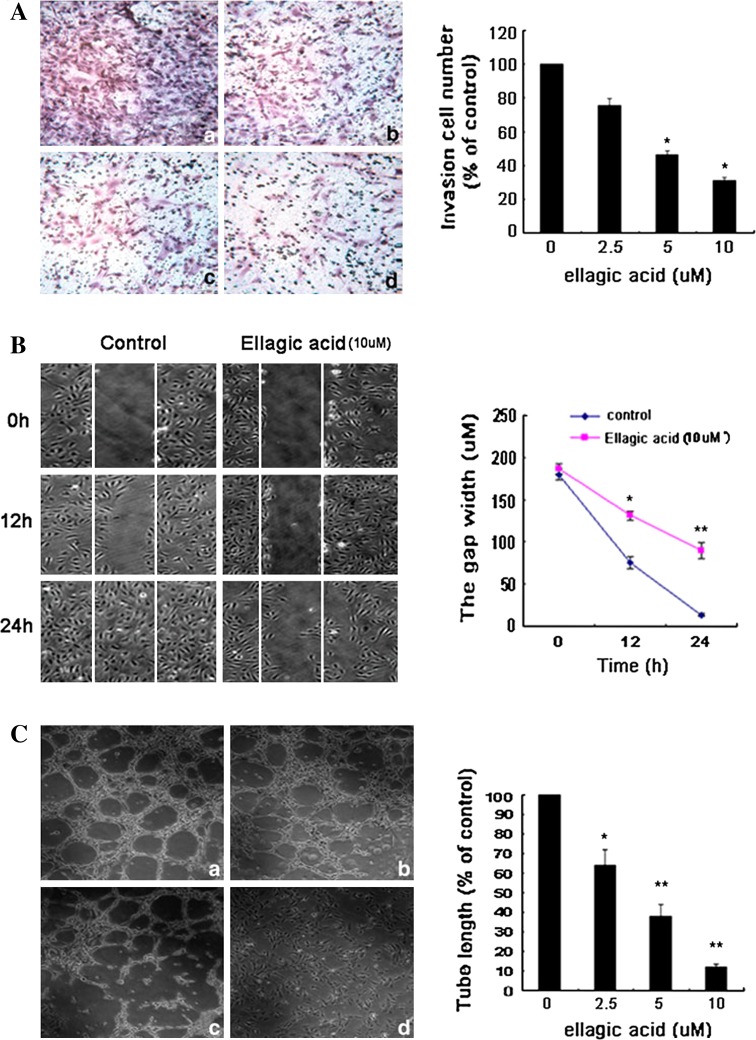Fig. 2.
Ellagic acid suppressed VEGF-induced invasion, migration, and tube formation of HUVECs. a HUVECs at a density of 2 × 105 cells/ml were planted into a 6-well transwell (8-μm pore size) subsequently added with different concentrations of ellagic acid and VEGF. After 24 h incubation, the cells at the bottom of the membrane were fixed and analyzed. It was showed that ellagic acid decreased the number of invasive cells in a dose-dependent manner (a 0 μM, b 2.5 μM, c 5 μM, d 10 μM; data are presented as means ± SD, n = 6, *P < 0.05 versus untreated control). b A total of 5 × 105 HUVECs per well were seeded in a 6-well plate for wound-healing assay. The results showed that ellagic acid significantly inhibit the migration of HUVECs in the presence of VEGF stimulation (data are presented as means ± SD, n = 6, *P < 0.05, **P < 0.01 versus untreated control). c HUVECs were seeded at a density of 2 × 105 cells per well using a 12-well plate which was pre-coated with Matrigel. Varying concentrations of ellagic acid (2.5, 5, and 10 μM) were added together with VEGF (20 ng/ml) for additional 8 h incubation. It was observed that ellagic acid could dose dependently suppress the capillary lengths of VEGF-stimulated endothelial cells (a 0 μM, b 2.5 μM, c 5 μM, d 10 μM; values represent means ± SD, n = 6, *P < 0.05, **P < 0.01 versus untreated control)

